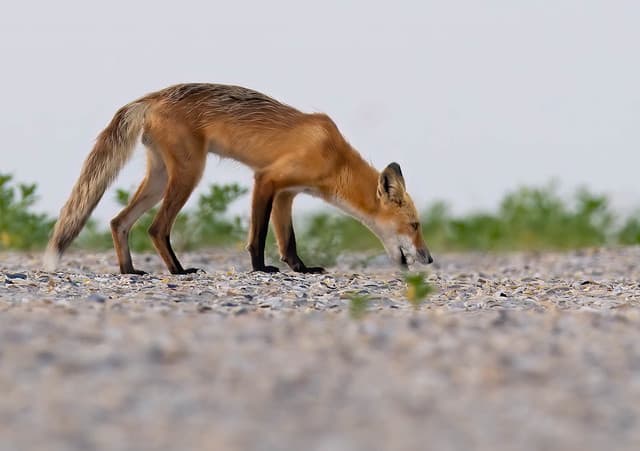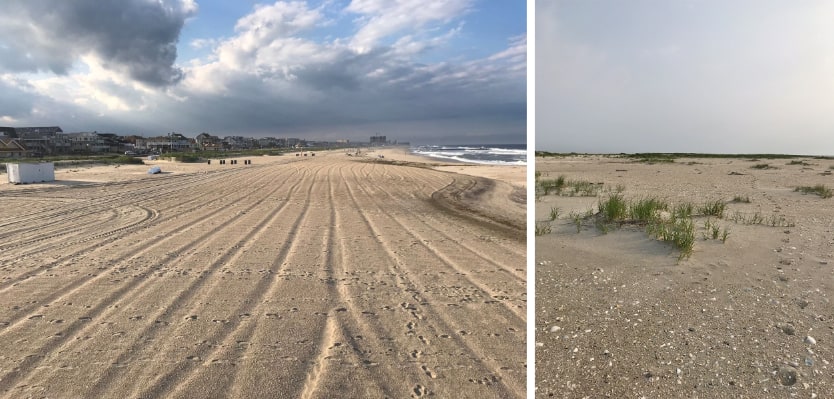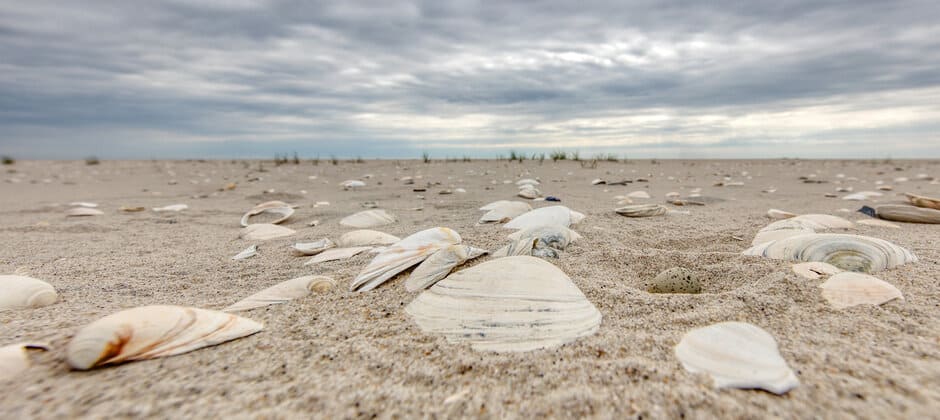Share this article
JWM: Red foxes exploit dunes to find plover nests
Some New Jersey coastal towns are characterized by long, linear beaches with narrow dune systems that provide habitat for piping plovers and other wildlife. But researchers say red foxes are using these bands of vegetated dunes to prey on plovers’ nests, creating an even greater risk for the threatened birds.
“These linear dune systems are not good for [piping plovers], because the dunes likely put plover nests at an increased risk of predation,” said Michelle Stantial, a recent PhD graduate in wildlife management from the State University of New York College of Environmental Science and Forestry.

A red fox eats least tern eggs on the beach in New Jersey. Credit: Jim Verhagen
Piping plovers (Charadrius melodus) on the Atlantic Coast are listed as threatened under the Endangered Species Act due to habitat loss from human development along many beaches where they used to be found. Some areas in New Jersey are built to protect human development as they buffer against storm surges. Piping plovers and other birds sometimes nest in the open sand areas in front of the human-created dune systems.

Researchers searched areas for predator tracks like these left by a red fox. Credit: Michelle Stantial
Stantial’s research, published recently in the Journal of Wildlife Management, shows that the bands of dunes may be a type of ecological trap due to the way red foxes (Vulpes vulpes) use the areas.
Predation has been the number one cause of plovers’ nest lost for the past several years, and Stantial and her co-authors wanted to determine if foxes were using the landscape in ways that may put the nests of piping plovers and other shorebirds like American oystercatchers (Haematopus palliatus), least terns (Sternula antillarum) and black skimmers (Rynchops niger) at greater predation risk.
They looked for signs of predators along New Jersey beaches between Barnegat Lighthouse State Park and Cape May Point State Park, including open beaches and dune-like areas with brush and grass cover. From 2015 to 2017, the team examined the sand for predator tracks during plover nesting season — between mid-April and mid-August.

Linear dune systems are characterized by narrow, vegetated areas, seen in the far left of the photo on the left. More natural systems are characterized by patches of vegetation, as seen in the photo on the right. Credit: Michelle Stantial
The team divided each season into four different periods: starting in mid-April when plover pairs first establish their territory, the end of May when they are incubating eggs, the beginning of June when the nests hatch and the start of July when chicks begin to fledge and leave their nesting areas.
The foxes seem to have an ongoing presence, whether or not the plovers are nesting, Stantial said. They’re probably looking for voles or rabbits as they crisscross the beach, she said, but they prefer dunes to open sand, and they’ll eat plover eggs if they come across them. Since these bands of beaches and dunes are narrow, foxes are more likely to discover the nests than if they were in a natural dune system.
Restoring beaches to more natural ecosystems would help piping plover nest survival, she said.
This article features research that was published in a TWS peer-reviewed journal. Individual online access to all TWS journal articles is a benefit of membership. Join TWS now to read the latest in wildlife research.
Header Image:
Piping plover nests are well hidden on the landscape, but they are still susceptible to fox predation.
Credit: Jim Verhagen








